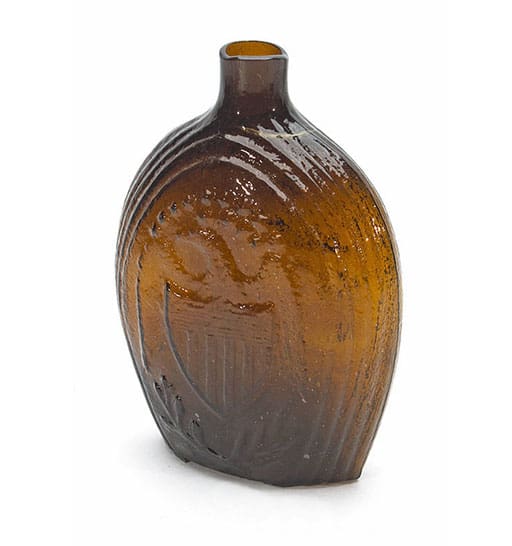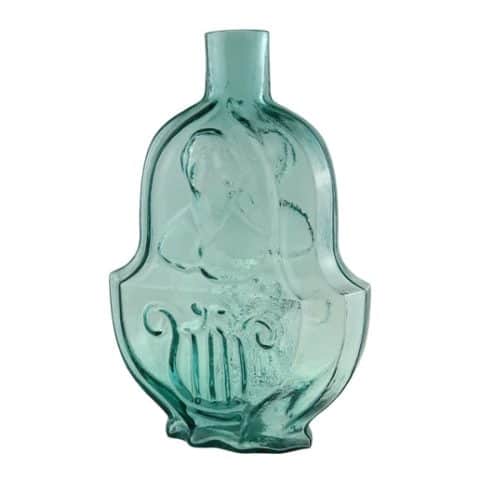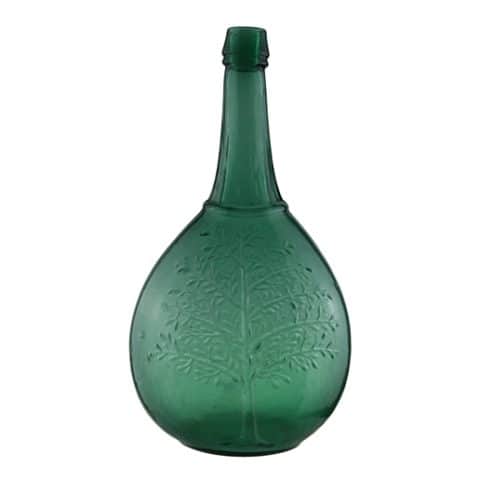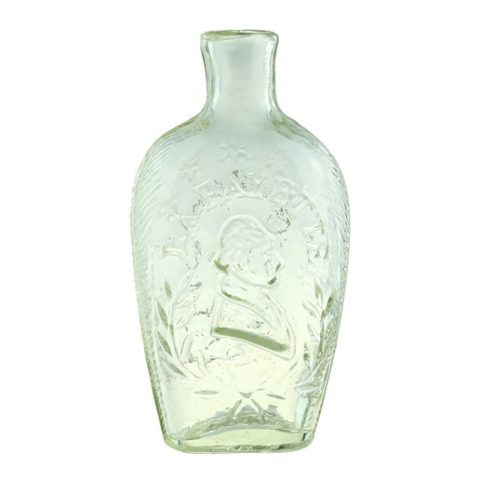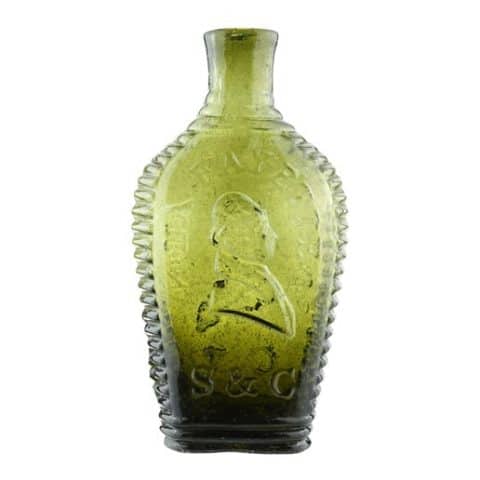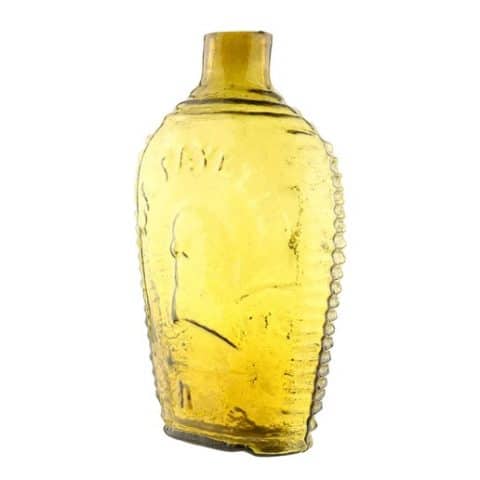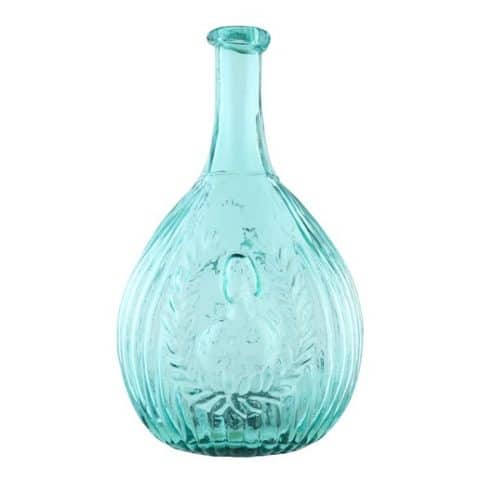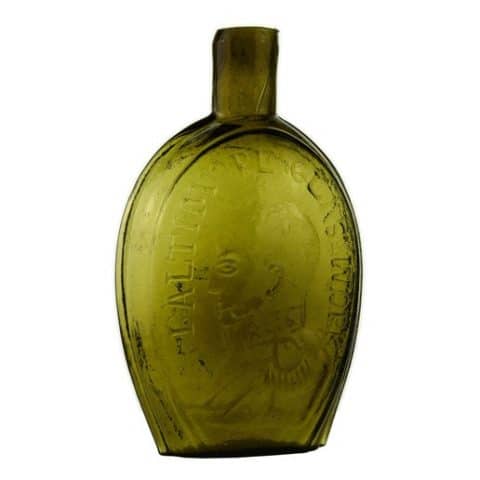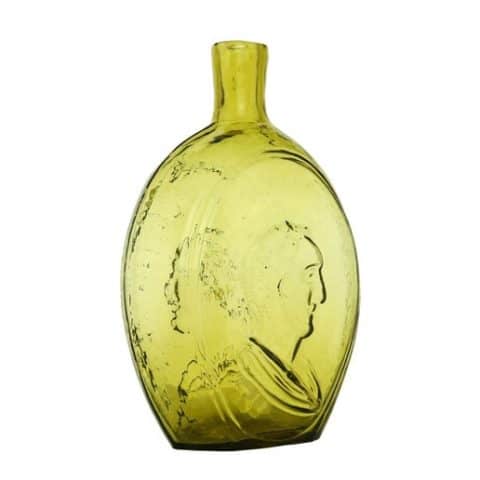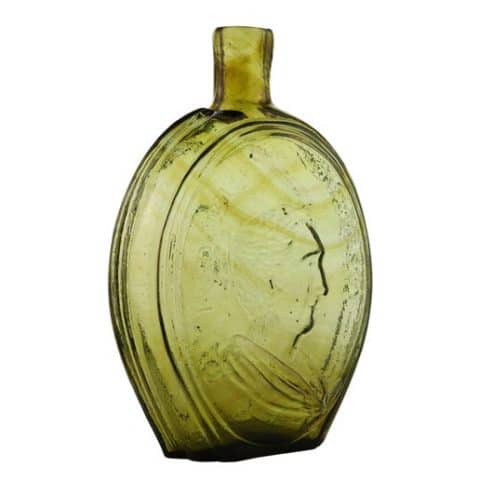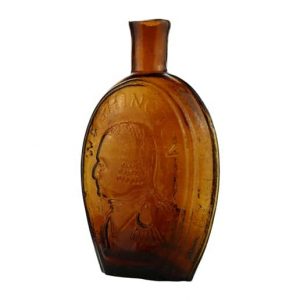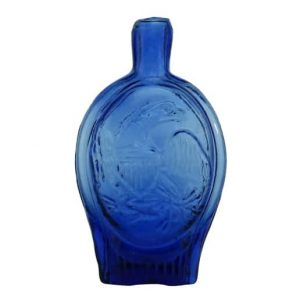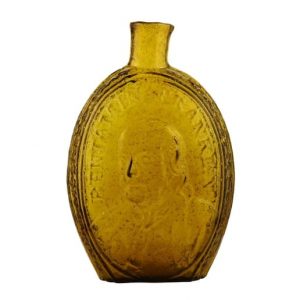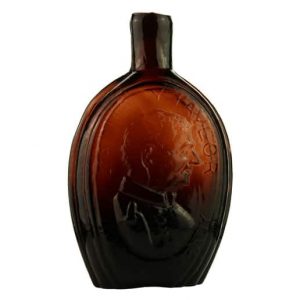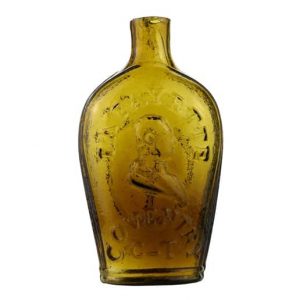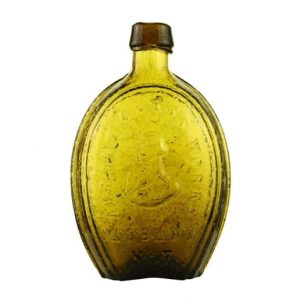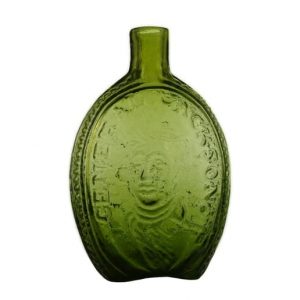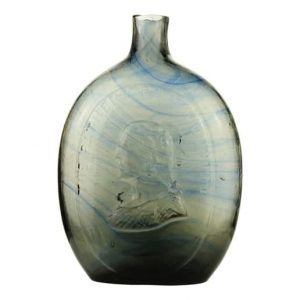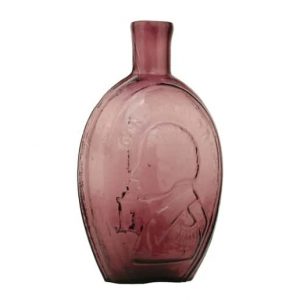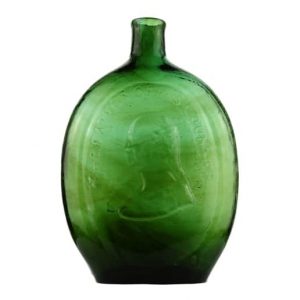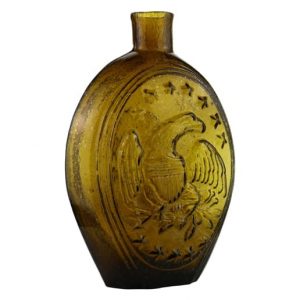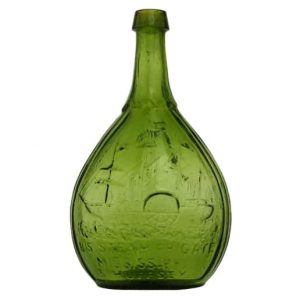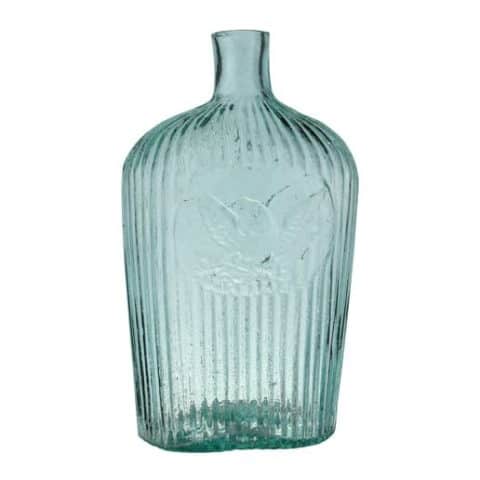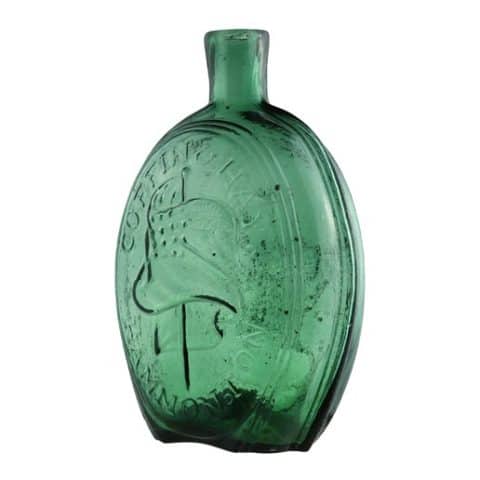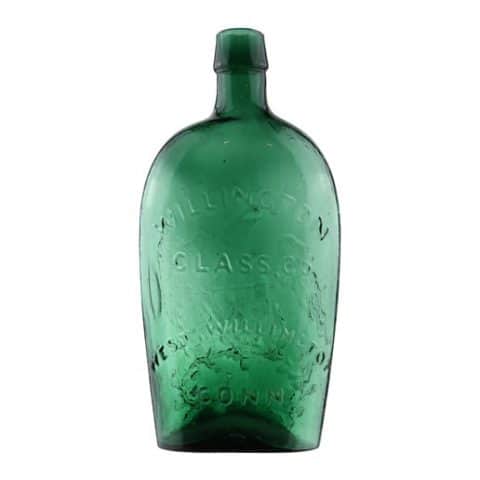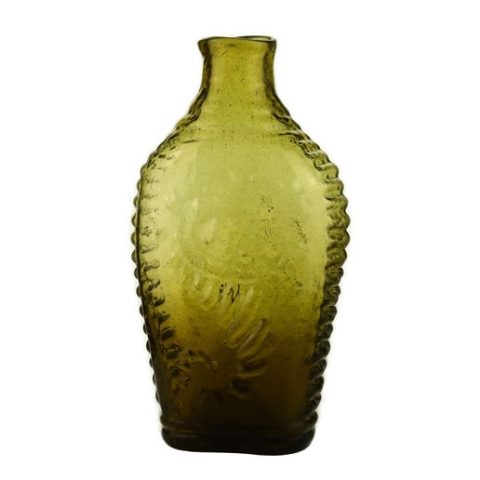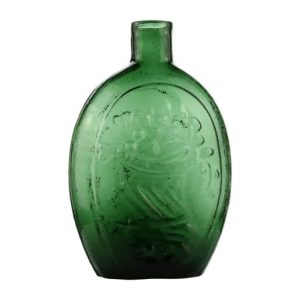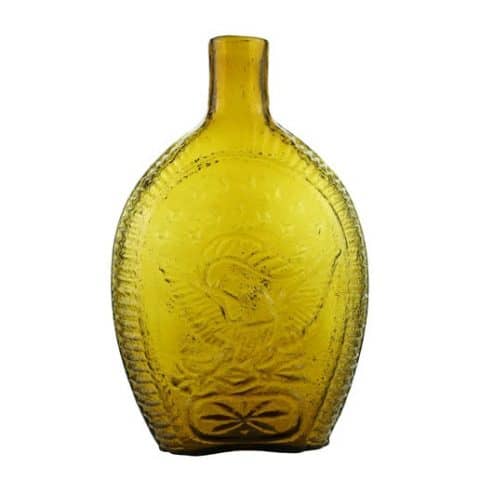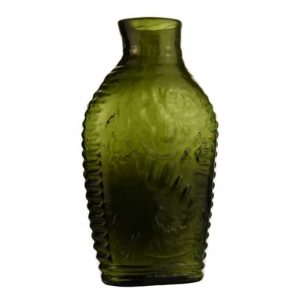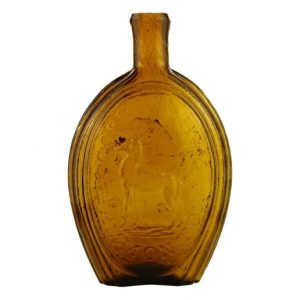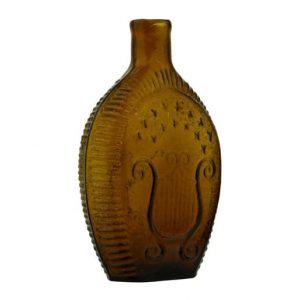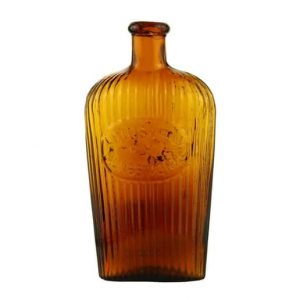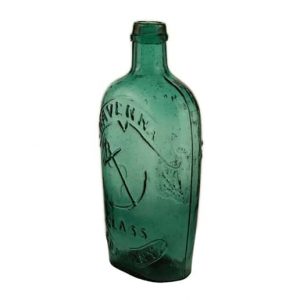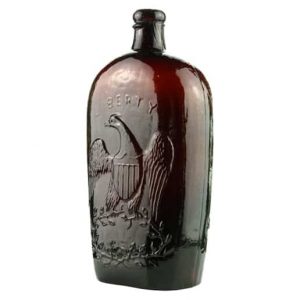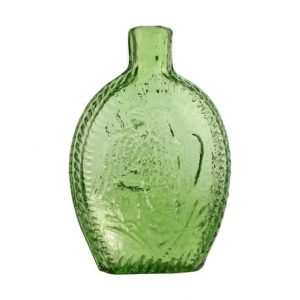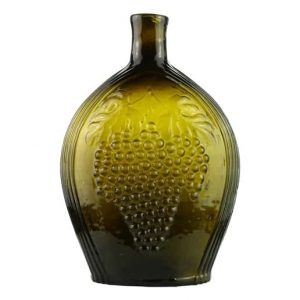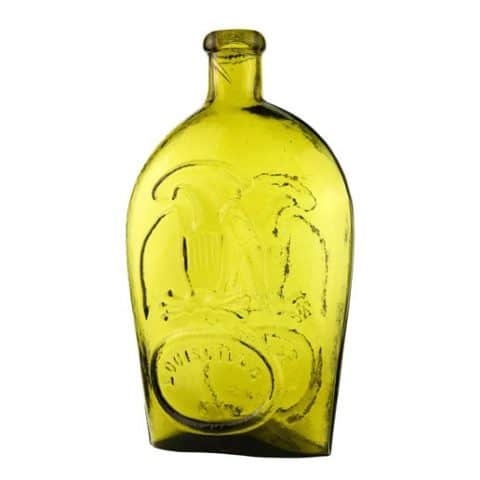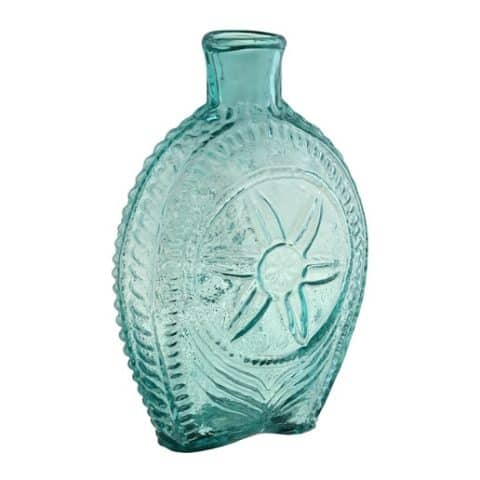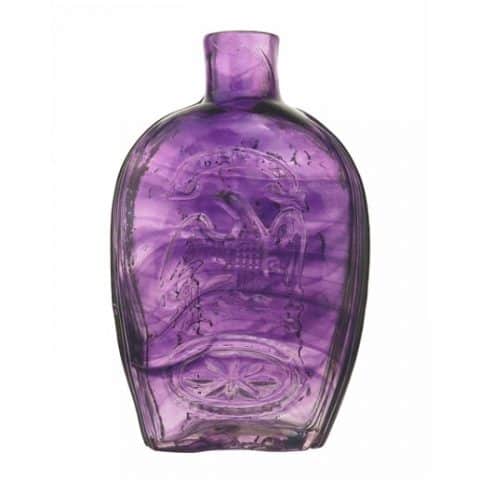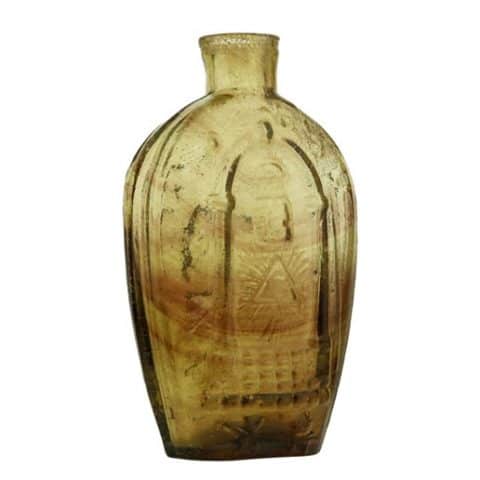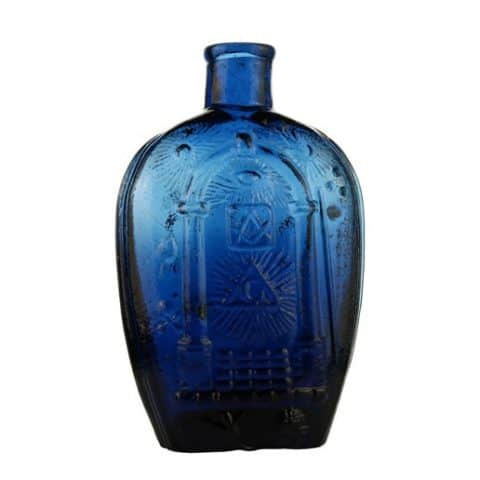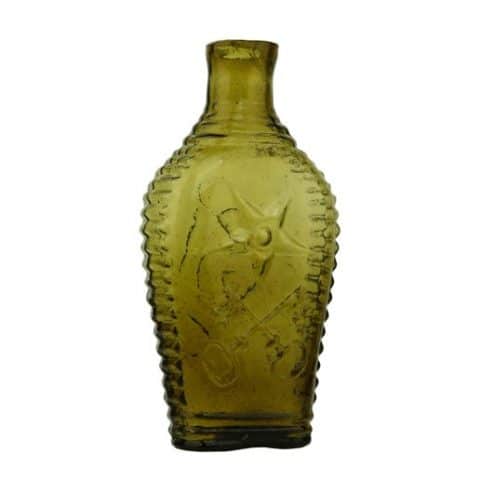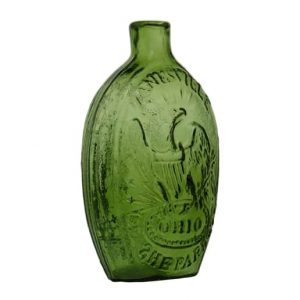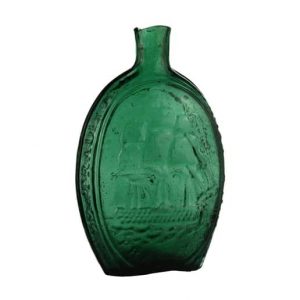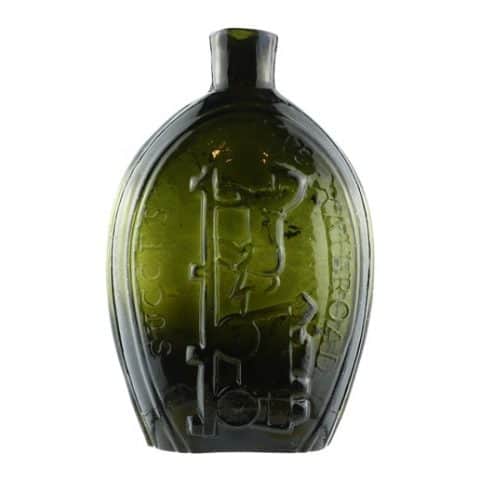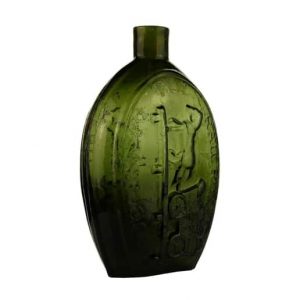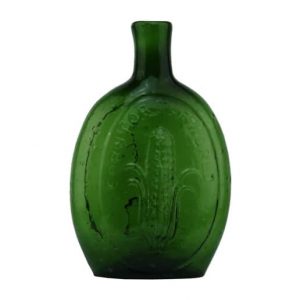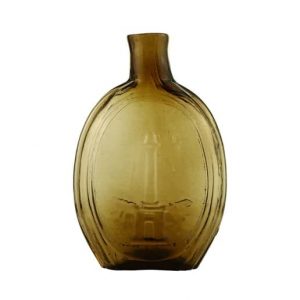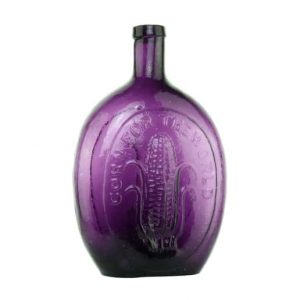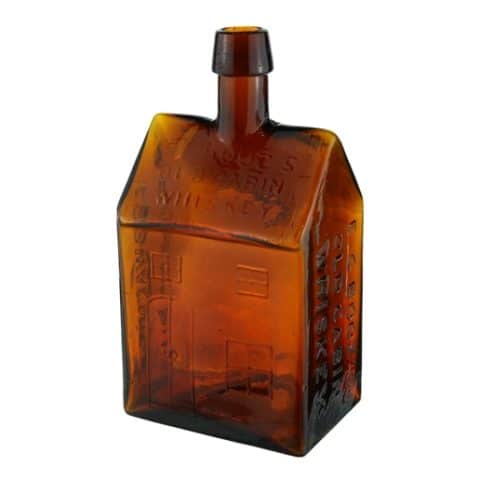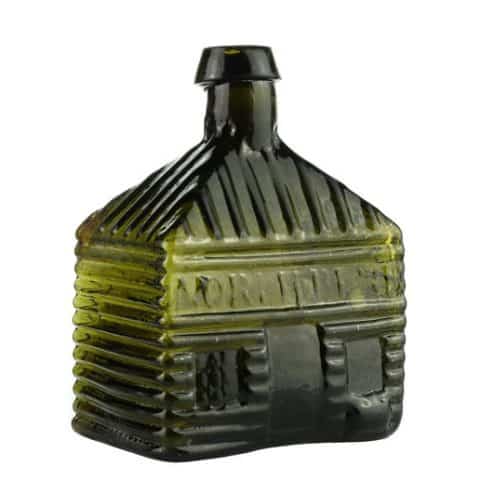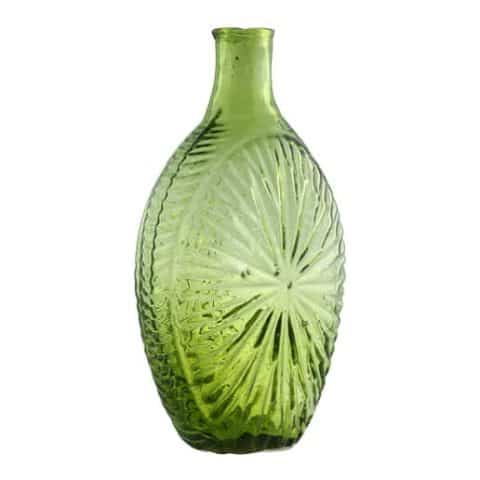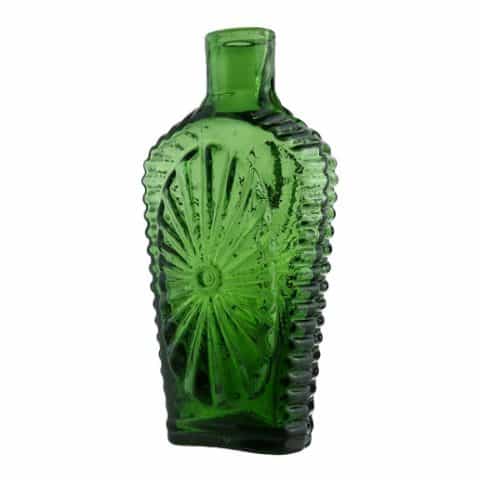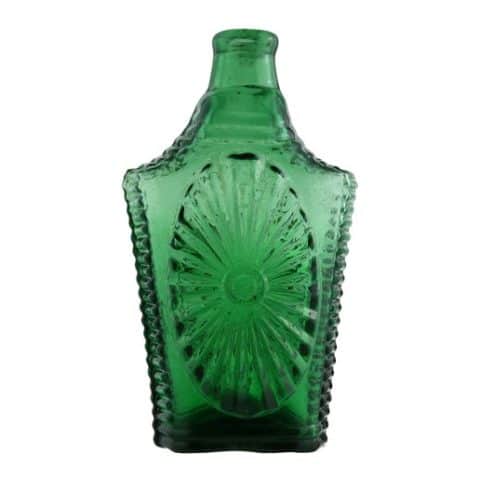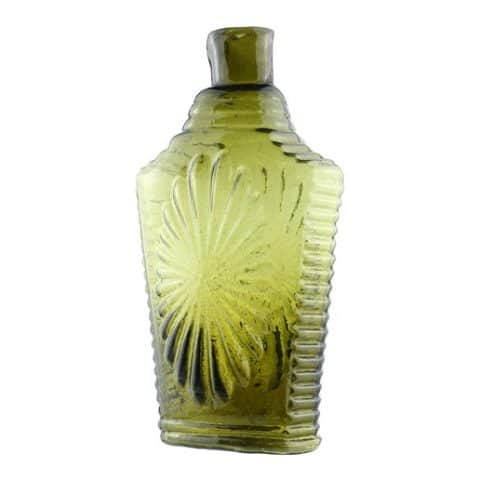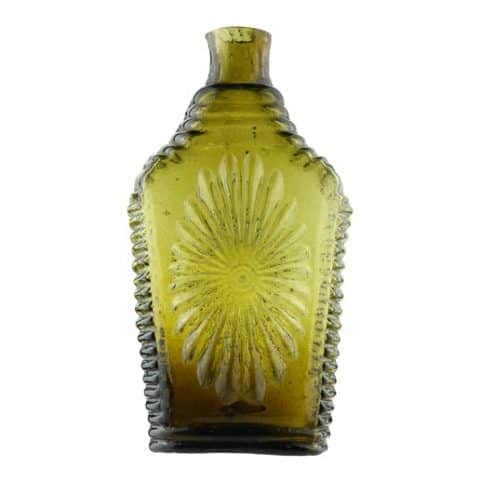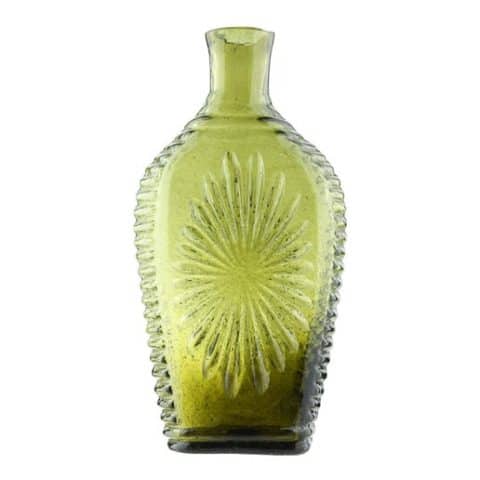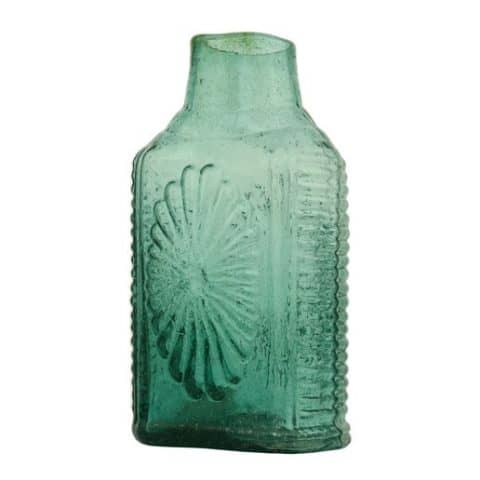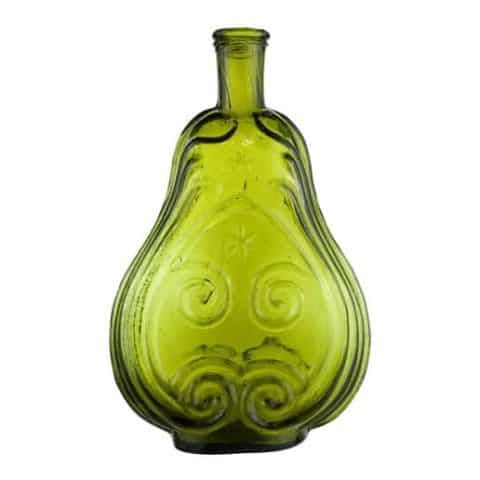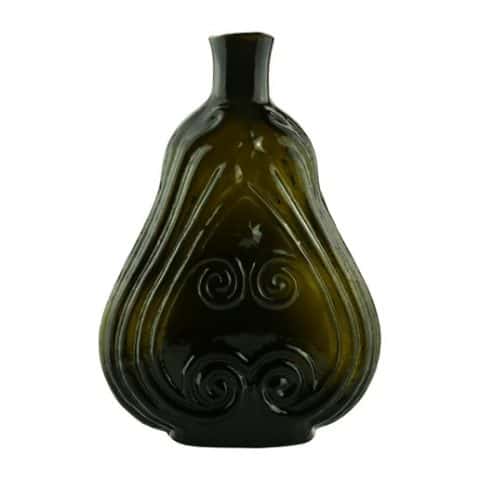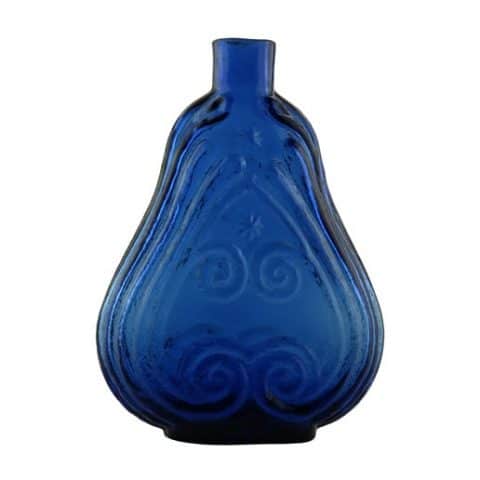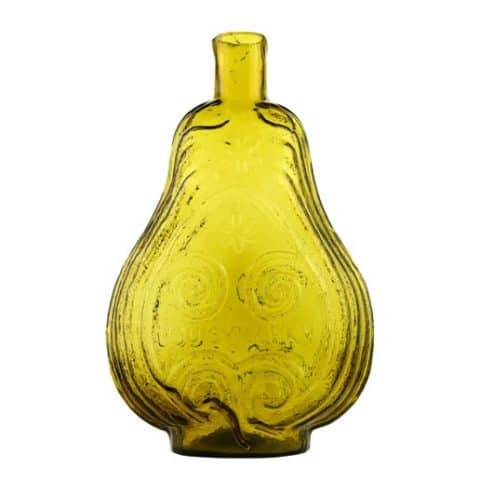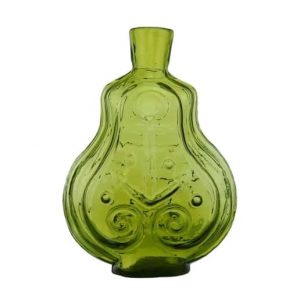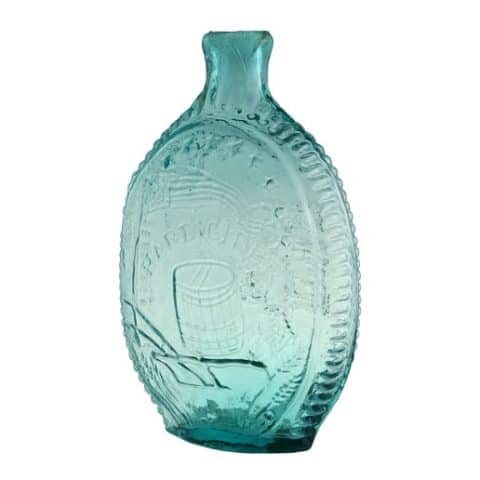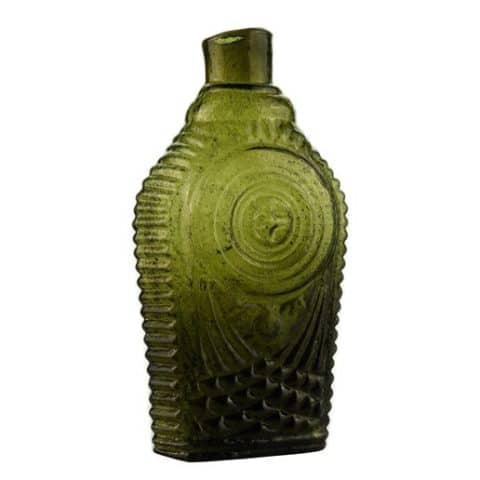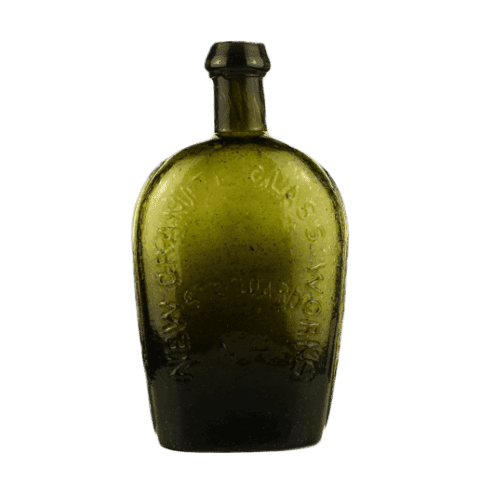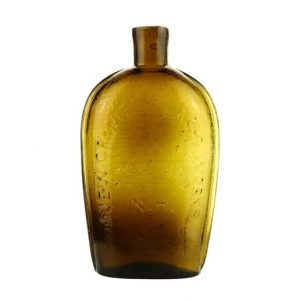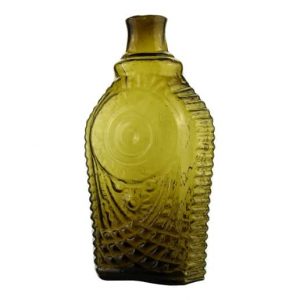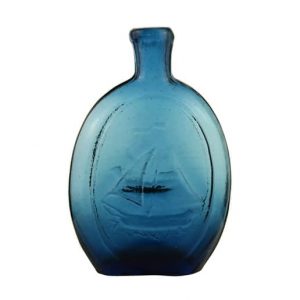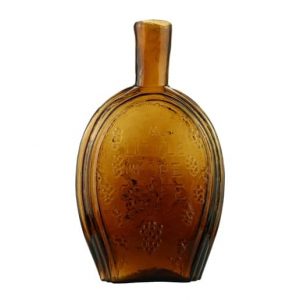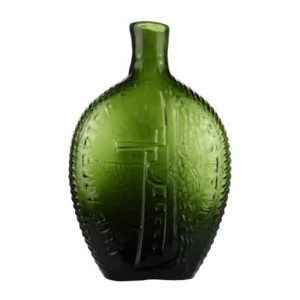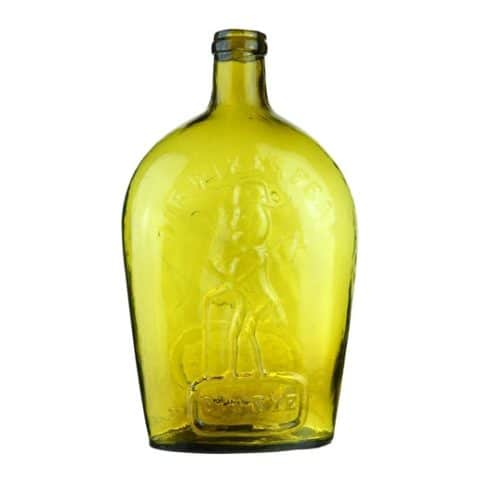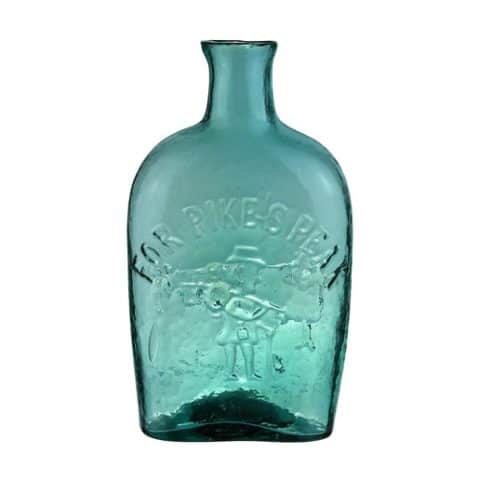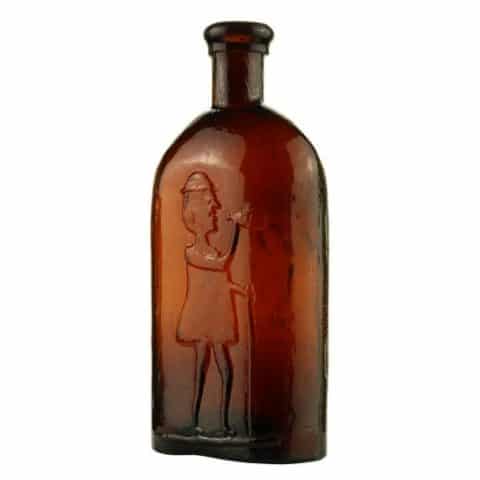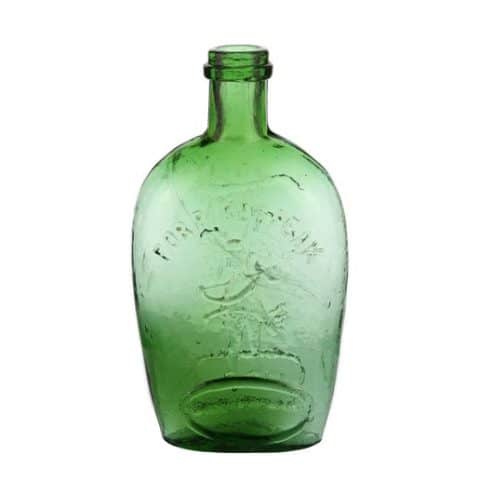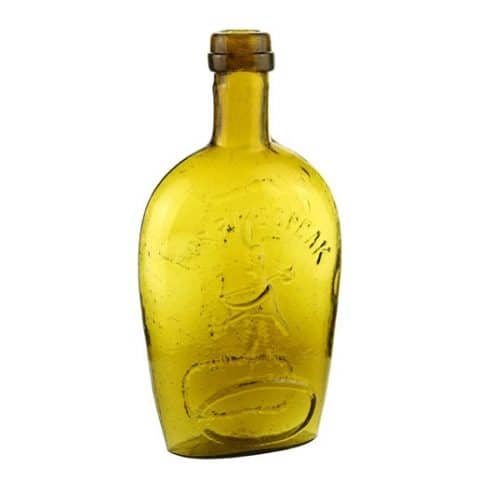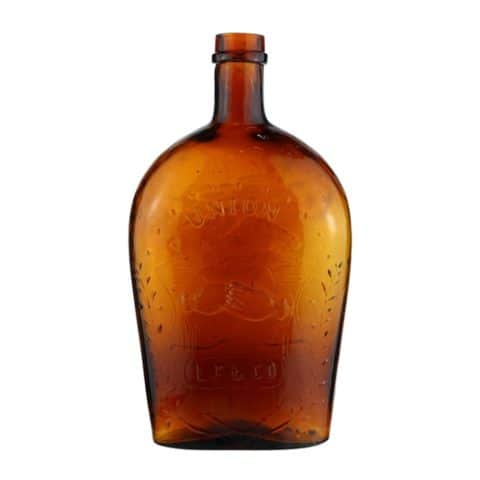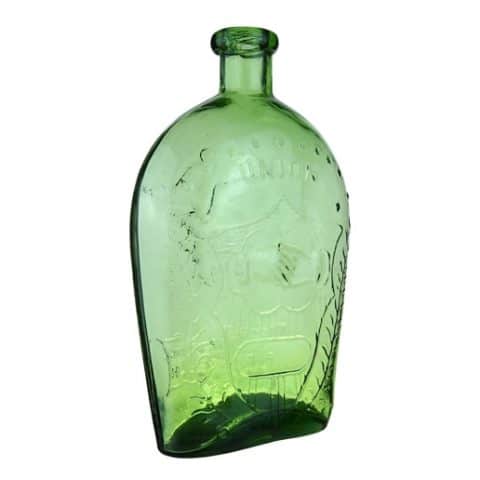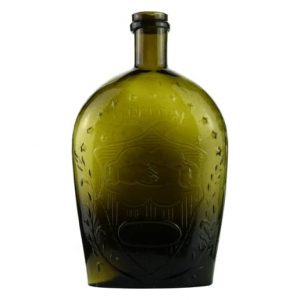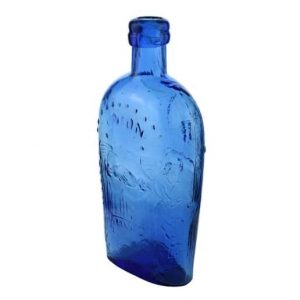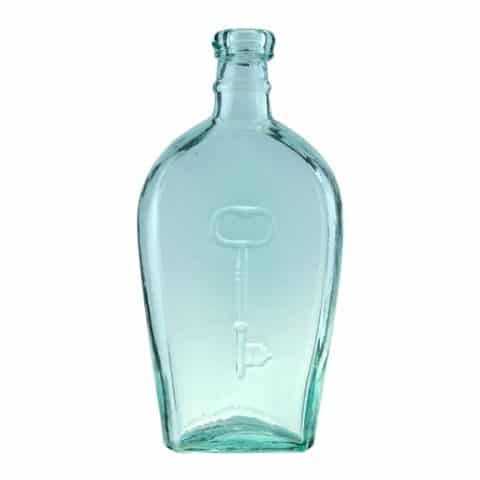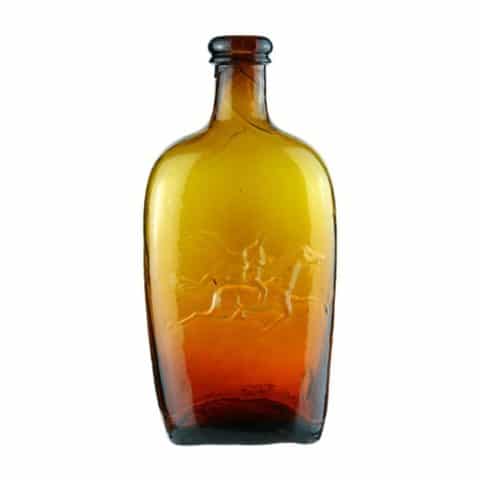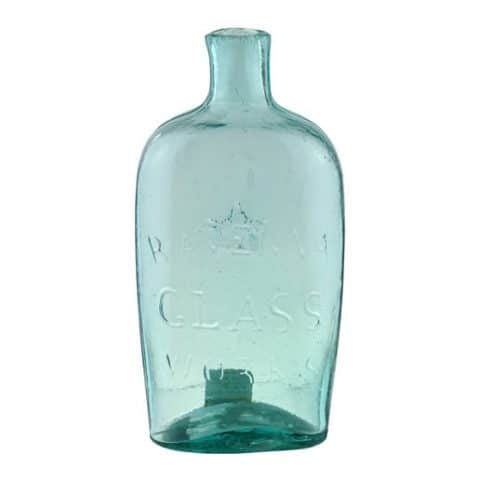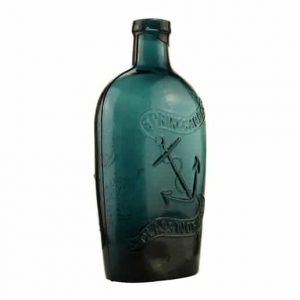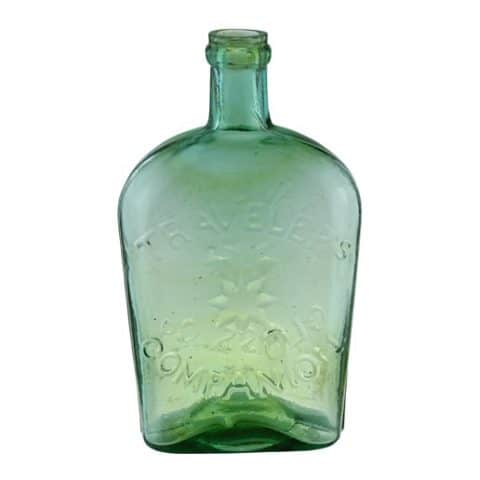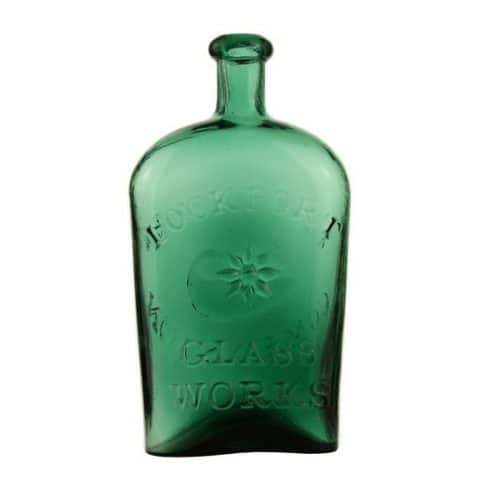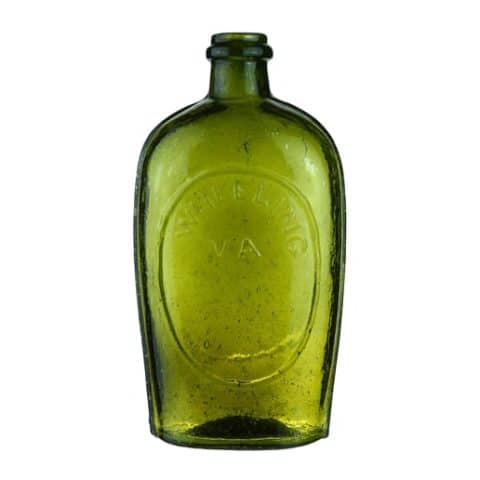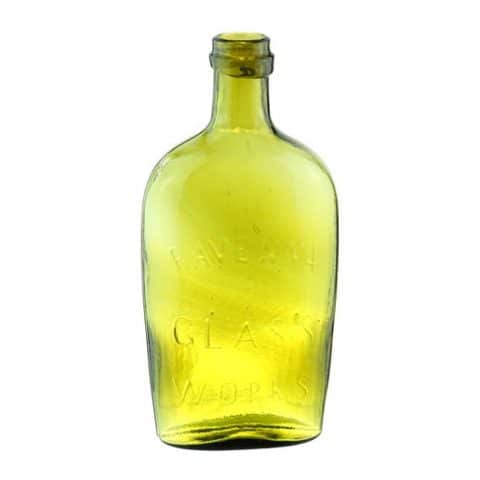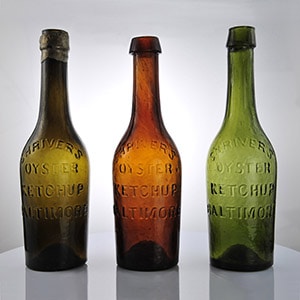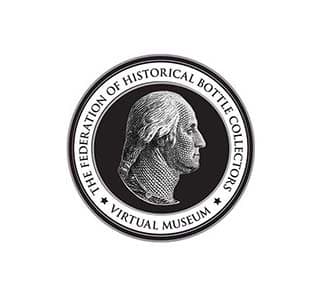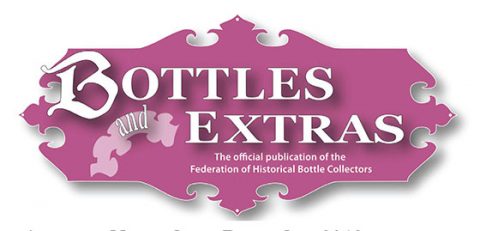GII-54 Eagle – Flag Flask
GII – 54
Eagle – Flag And “For Our / Country” Flask
Attributed to Coffin & Hay Manufactory
Hammonton, New Jersey
Olive Green Pint
Provenance: Annonymous
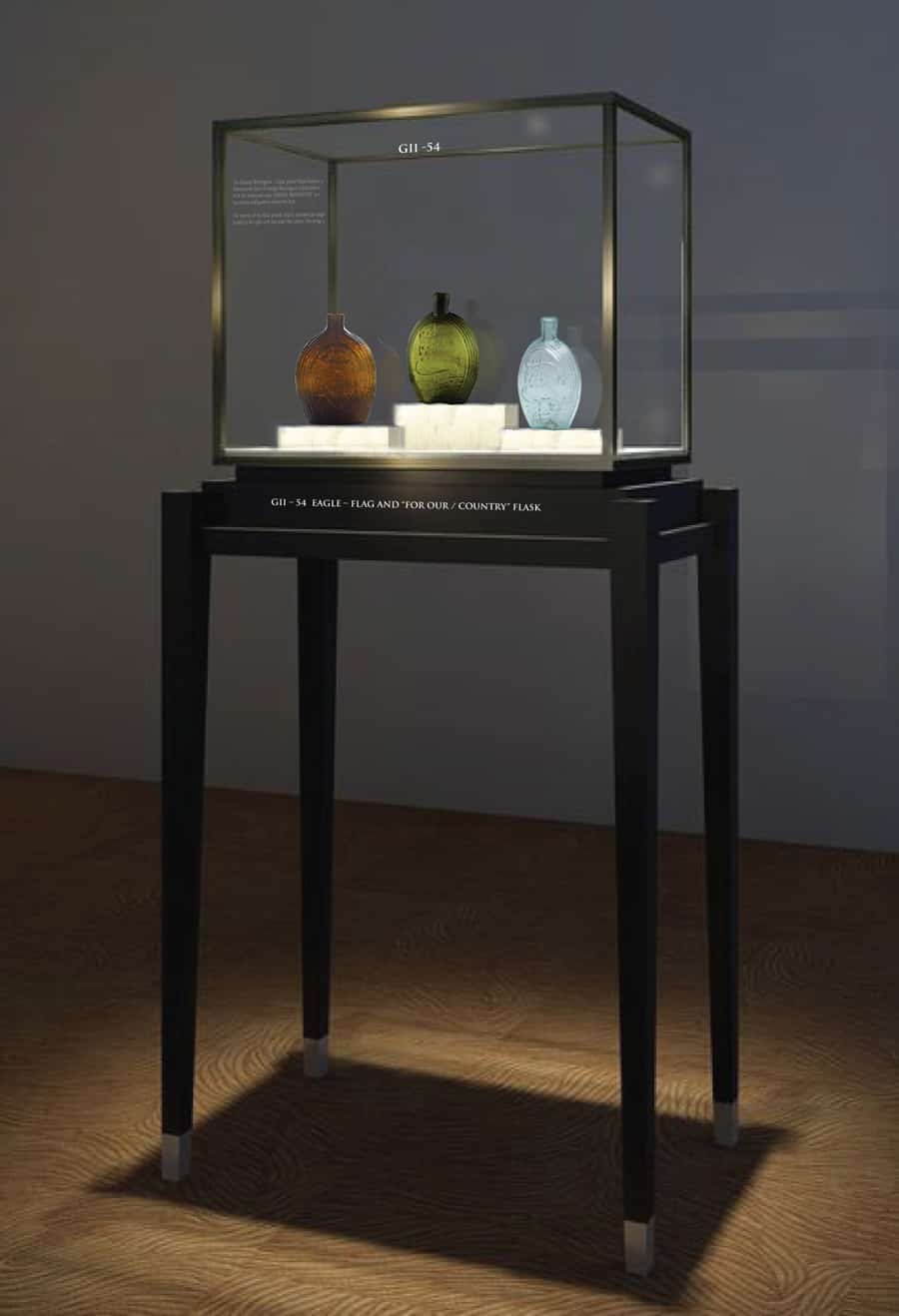
Our example of a pint GII-54 Eagle-Flag flask in olive green embodies a deep patriotism and celebration of “Our Country” with its American Eagle and American Flag presentation. The condition is spectacular and the piece is in a glass color we have not seen before, with some puce striations making this specimen one to admire and behold. The flask is attributed to the Coffin & Hay Manufactory in Hammonton, New Jersey, from 1836 to 1847 or so.
The American eagle was chosen to decorate more flasks than any other single motif in the entire repertoire of flask design elements. It is not hard to understand why our young country chose the American bald eagle as its emblem to signify strength, power, and sovereignty on the Great Seal of the United States.
The American flag was not so widely used as a decorative element on figured historical flasks but, when used, signified our growing country and patriotism. The 1818 flag made some realize that adding a new star and new stripe for each new State was impractical, so Congress passed the Flag Act of 1818, which returned the flag design to 13 stripes and specified 20 stars for the 20 states.
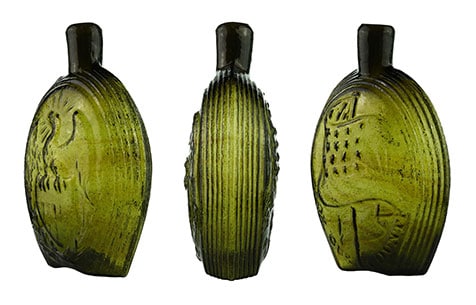
When looking at the flask’s obverse side, you see an oval panel with an embossed American eagle with its head erect and turned to the left and upward. Sun rays surround the head and inner tips of the wings. The eagle’s body is inclined in the same direction, with its wings partly raised. The eagle is perched on a shield with six broad vertical bars on the lower half—the wings drop-down parallel to the upper sides of the shield. Below the shield and extending upward around the bottom half of the shield are tied olive and palm branches. Fine vertical ribbing surrounds the figures in a horseshoe shape.

The reverse of the flask features an embossed furled United States flag on a flagstaff with stripes and twenty stars. Below, in a concave semicircle, is embossed copy reading ‘FOR OUR COUNTRY.’ As on the front, fine vertical ribbing surrounds the figures in a horseshoe shape.
The pint flask has a plain lip and pontil mark. The edges have fine vertical ribbing.
Known glass colors for the GII-54 Eagle-Flag flask are aqua, which is comparatively scarce: pale olive green, rated very rare, and Olive amber, which is considered extremely rare. Our example of an olive green pint seems to be unlisted.
See the museum example of the extremely rare GII-49 Eagle-Stag flask associated with Coffin & Hay.
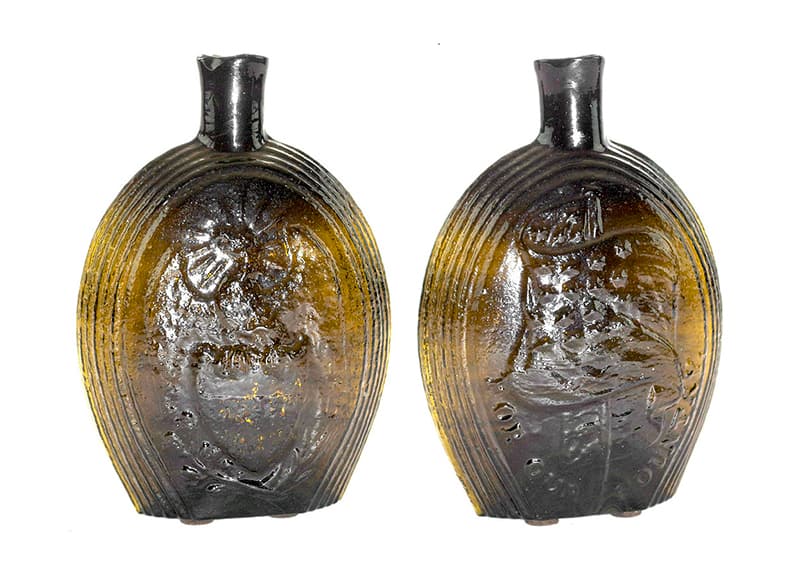
The Hammonton Glass Works years of Bodine Coffin and Andrew Hay
William Coffin and his sons, especially William, Jr., either founded or were involved in eight New Jersey glasshouses. William Coffin, Sr., and Jonathan Haines erected the family’s first enterprise, a window-glass factory, at Hammonton, New Jersey, in 1817.
In the mid-1820s, William Coffin Sr. was the owner and operating the Hammonton Glass Works when his son William Coffin Jr. left to become a partner in the Millville glassworks in 1828. William Sr. continued to run the works until 1836 when he leased the works to his son Bodine Coffin and his son-in-law Andrew K. Hay. They would operate Coffin & Hay glassworks from January of 1836 until November of 1838 when a disastrous fire destroyed the factory. Subsequently, the Coffin and Hay company was dissolved in November of 1839.
In 1839, Hay then moved to Winslow, New Jersey, and with William Coffin opened the Winslow Glass Works. Thus there were two Coffin & Hay partnerships representing two separate glassworks, but the Hammonton Glass Works ended its Coffin & Hay ownership in late 1838. Andrew Hay probably took the molds that survived the Hammonton fire and used them again at the Winslow plant. These were probably used until the molds wore out. The length of time depended on how often the molds were used and how many flasks were produced. Thus, the date range for the Coffin & Hay flasks could have extended from 1836 to 1847 or even later.
Primary Image: GII-54 Eagle – Flag “For Our Country” flask imaged on location by Alan DeMaison, FOHBC Virtual Museum Midwest Studio
Support Images: Auction Lot 127: Eagle – Flag And “For Our / Country” Historical Flask, probably Coffin and Hay Manufactory, Hammonton, New Jersey, 1840-1857. Medium to deep yellowish amber, sheared mouth – pontil scar, pint; (light exterior high point wear, edge of mouth may have been buffed). GII-54 Listed as comparatively scarce. Generally fine condition. – Norman C. Heckler & Company, Auction #164
Support Images: Auction Lot 9: Eagle – Flag Historical Flask, probably Coffin and Hay Manufactory, Hammonton, New Jersey, 1836-1847. Aquamarine, sheared mouth – pontil scar, pint. GII-54 Crude “orange peel” exterior surface and great glass clarity. Fine condition. – Norman C. Heckler & Company.
Support Images: Auction Lot 324: EAGLE – FURLED FLAG / “FOR OUR COUNTRY”, (GII-54), Coffin & Hay Glass Works, Hammonton, New Jersey, ca. 1820-1840, deep olive amber with darker striations of color pint, open pontil, sheared and tooled lip. A factory fire-polish on the outer edge of the lip was done to smooth out a rough area that occurred when the lip was sheared away from the blowpipe. Crude pebble glass, strong impression and in a very rare color for a Coffin & Hay flask! – Jim Hagenbuch, Glass Works Auctions, Auction #147
Support: Reference to American Bottles and Flasks and Their Ancestry by Helen McKearin and Kenneth M. Wilson, Crown Publishers Inc., New York, 1978.
Support: Reference to Companies Owned by the Coffin Family by Bill Lockhart, Beau Schriever, Bill Lindsey, and Carol Serr
Join the FOHBC: The Virtual Museum is a project of the Federation of Historical Bottle Collectors (FOHBC). To become a member.

